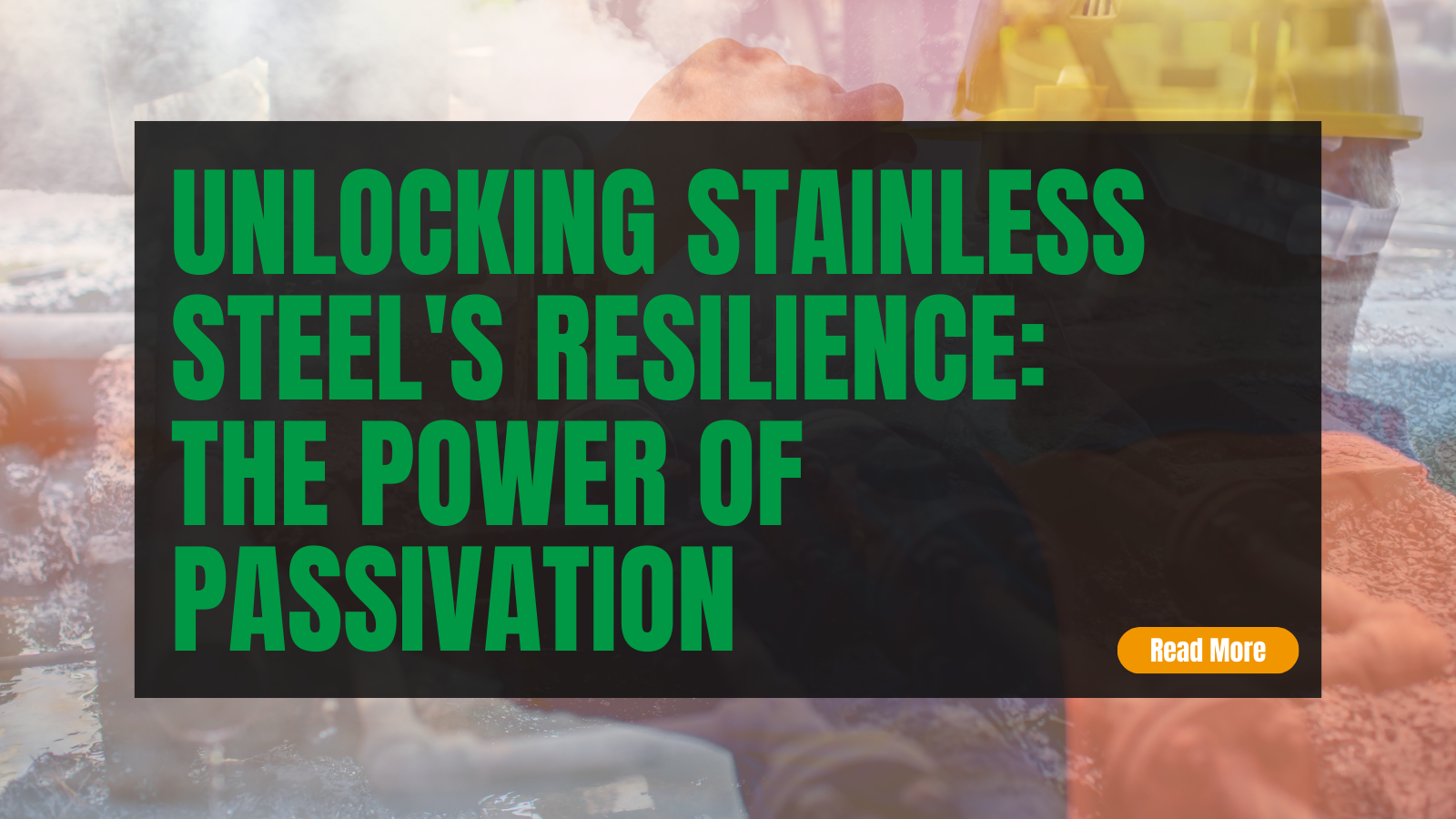Unlocking Stainless Steel's Resilience: The Power of Passivation

When it comes to bolstering the corrosion resistance of stainless steel, especially in challenging environments like machining and fabrication, basic maintenance isn't always enough. Enter advanced treatments, and in this guide, we'll delve into one of the most effective techniques—passivation treatments.
Typically performed after fabrication or machining and before assembly, passivation treatments are designed to maximize the formation of a thin chromium oxide layer—a key contributor to stainless steel's corrosion resistance. We'll explore the nuances of passivation, its methods, and its vital role in enhancing stainless steel durability.
Understanding Passivation: A Shield Against Corrosion
Before diving into treatment specifics, it's crucial to grasp the fundamentals of passivation. Stainless steel's corrosion resistance hinges on a thin chromium oxide layer, naturally forming when the steel surface interacts with oxygen. However, this process can be impeded by surface contaminants or damage.
Passivation treatments not only encourage the natural formation of this protective layer but also mitigate corrosion risks by addressing factors like free iron and sulfides—common culprits introduced during machining or present in the environment.
Passivation Methods: Navigating Acids and Temperatures
Passivation relies on acids, mainly nitric and citric acids, at varying temperatures and concentrations. The choice of method depends on the steel grade, and adherence to industry standards is paramount. ASTM provides several standards, including A380/A830M, ASTM A967/A967M, and ASTM B912.
For different steel grades, specific treatments are recommended. High-chromium steels require nitric acid baths, while free-machining grades involve alternating alkaline and acid baths. Thorough submersion of components is crucial to prevent uneven treatment. Passivation specifics vary, highlighting the nuanced approach needed.
A Quick Summary: Navigating Passivation Safely
While passivation significantly improves corrosion resistance, mishandling can lead to unintended consequences. This quick summary provides essential guidelines:
- Thoroughly clean steel before passivation.
- Monitor acid baths using titration to maintain proper concentrations.
- Avoid chlorides in passivation baths.
- Implement routine bath replacements to ensure efficacy.
- Steer clear of mixing different steel grades in passivation processes.
- Prevent metal-to-metal contact using racks.
- Seek professional advice on chemistry and treatment specifics.
- Adhere to stringent safety protocols for chemical use and disposal.
In conclusion, passivation is a potent tool for enhancing stainless steel's corrosion resistance, but precision and care are non-negotiable. INOX-TEK, with over years of expertise, stands ready to assist with stainless steel solutions for diverse applications. Contact us today for comprehensive support tailored to your needs.
